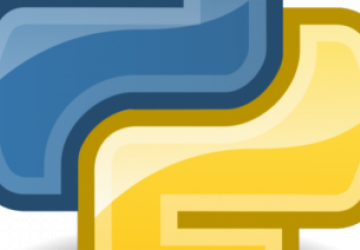Weekend Reading: Python

Python is easy to use, powerful, versatile and a Linux Journal reader favorite. We've round up some of the most popular recent Python-related articles for your weekend reading.
-
Introducing PyInstaller by Reuven M. Lerner: Want to distribute Python programs to your Python-less clients? PyInstaller is the answer.
-
Bytes, Characters and Python 2 by Reuven M. Lerner: Moving from Python 2 to 3? Here's what you need to know about strings and their role in in your upgrade.
-
Introducing Python 3.7's Dataclasses by Reuven M. Lerner: Python 3.7's dataclasses reduce repetition in your class definitions.
-
Examining Data Using Pandas by Reuven M. Lerner: You don't need to be a data scientist to use Pandas for some basic analysis.
-
Multiprocessing in Python by Reuven M. Lerner: Python's "multiprocessing" module feels like threads, but actually launches processes.
-
Launching External Processes in Python by Reuven M. Lerner: Think it's complex to connect your Python program to the UNIX shell? Think again!
-
Thinking Concurrently: How Modern Network Applications Handle Multiple Connections by Reuven M. Lerner: exploring different types of multiprocessing and looks at the advantages and disadvantages of each.
-
Threading in Python by Reuven M. Lerner: threads can provide concurrency, even if they're not truly parallel.
-
Using Python for Science by Joey Bernard: introducing Anaconda, a Python distribution for scientific research.
-
Visualizing Molecules with Python by Joey Bernard: introducing PyMOL, a Python package for studying chemical structures.
-
Novelty and Outlier Detection by Reuven M. Lerner: we look at a number of ways you can try to identify outliers using the tools and libraries that Python provides for working with data: NumPy, Pandas and scikit-learn.
-
Learning Data Science by Reuven M. Lerner: I've written a lot about data science and machine learning. In case my enthusiasm wasn't obvious from my writing, let me say it plainly: it has been a long time since I last encountered a technology that was so poised to revolutionize the world in which we live.
-
Classifying Text by Reuven M. Lerner: I want to bring your attention to a surprisingly simple—but powerful and widespread—use of machine learning, namely document classification.
-
Pythonic Science in the Browser by Joey Bernard: the web browser interface has become the de facto way of doing scientific programming with Python. It has become so popular in fact, it has spun off as its own project, named Jupyter. In this article, I take a look at how to get the latest version up and running, and I discuss the kinds of things you can do with it once it is set up.










